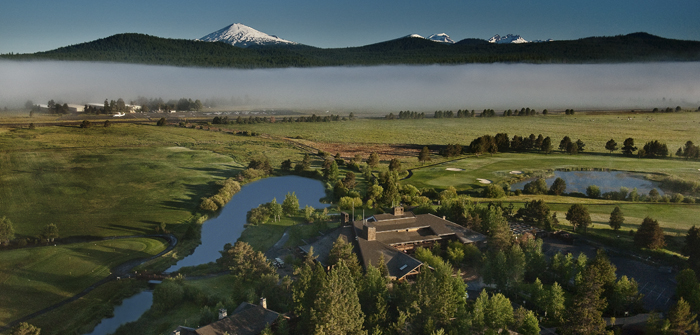A key article in this issue is authored by Rick Martinson of WinterCreek Restoration suggesting that we desperately need a wholesale shift in how we perceive, design and install landscapes. His focus is on creating long-term solutions to the effects of climate change and shifts in precipitation.
It’s a thoughtful article pointing out how water use will continue to be a contentious subject throughout the semi-arid west. Collaborative efforts are being made by local cities and irrigation contractors to increase the efficient application of water by ensuring landscape systems are designed and maintained correctly.
Rick says meeting future water restrictions will require creativity in how we design and construct landscapes in urban settings. One way to do that is through design and construction of projects based on the ecology of specific site locations.
Despite local efforts, Rick says that the number of projects addressing concerns over resource availability (predominantly water) is still small. He urges an increased understanding of environmental issues and hopes to address expected effects of climate change.
Rick concludes that new technology and shifts in design concepts and construction techniques within the green industry continue to improve efficiency of created landscapes, but some feel those changes are not fast enough or effective at addressing long-term sustainability of our industry. It’s critical to the continued viability of the landscape industry.
The issue of climate change is a big factor in water use and John Copyak of Clean USA Power continues to advocate for limiting global warming to less than 1.5 degrees (see specifics in his column by clicking HERE). John reports that thus far, the United States has resisted signing a measure to reduce climate change because developed countries have been asked to help fund emissions reduction efforts in less developed nations. The proposed COP21 agreement will treat all of the nations more equally; therefore, it’s likely that the U.S. will sign it.
Once our country ratifies the COP21 agreement, John says we will see many of the solutions to global warming take shape. Some of the solutions could include carbon taxes, removal of fossil fuel subsidies and shifting investments toward sustainable energy.
As the landscape industry grapples with the efficient use of water and the U.S. ponders climate change, WaterWatch Oregon and local irrigation districts are at odds over a frog. The fight may remind you of the spotted owl contest that severely severed local timber operations twenty years ago. The Northern Spotted Owl was put on the Endangered Species list and scientists at the time were worried the owl was on the brink of extinction. Loggers feared those protections would mean the end of their industry. Twenty years later, both the owl and the timber industry are just hanging on.
Now the Oregon Spotted Frog, which is listed as threatened under the federal Endangered Species Act, is the center of contention. Read a report HERE about the WaterWatch Oregon lawsuit against local water districts, suggesting that the districts show little interest in changing water practices on the Upper Deschutes. The districts of course see it differently and say they continue to work on a Habitat Conservation Plan (HCP) in the hopes that they can provide measures that support fish and frogs and other species, as well as providing irrigation water to our farmers and patrons.
Over $5 million have been invested in the HCP so far, half by Fish and Wildlife and half by the eight irrigation districts and City of Prineville. For every dollar of grant money, the districts have had to match it.
It isn’t just frog and farmer who depend on a healthy Deschutes River to thrive, health of the river trickles into many aspects of everyday life. Whether touched by the economic, recreational or day to day impact of the Spotted Frog lawsuit, it is asking us to reflect on the hydrology in the High Desert.
We would like to applaud the City of Prineville that pumped 615 million gallons of water in 2008 — but lost 27.9 percent of the total city water supply that year. Alarmed, the city engineer and public works director got their team working on the problem. They fixed water lines, changed out meters and installed a bulk water fill station to conserve and protect the city’s water supply. Their efforts paid off. During the calendar year 2015, the unallocated water rate fell to 3.9 percent.
Water conservation is important not only for environmental reasons, it also saves energy. Using pumps more efficiently cuts down on the city’s electricity cost — a much more efficient use of taxpayer’s money.
Traditionally, Central Oregon celebrates Earth Month with a series of lecture, workshops, tours and film aimed to a sustainable Central Oregon environment. Get to know local farmers and ranchers, learn about your personal carbon footprint, alternative transportation options, solar power and green building, how WaterWise programs work and your role in consumption, waste, recycling, reuse and compositing by visiting www.envirocenter.org or www.cocc.edu/sustainability.
Volunteer Connect, Central Oregon’s volunteer center, and SOLVE, a statewide non-profit focused on keeping Oregon clean and healthy, is calling for volunteers to participate in the annual SOLVE IT for Earth Day events on Friday, April 22 and Saturday, April 23.
SOLVE IT for Earth Day offers several projects in Central Oregon for volunteers of any age to make a difference by cleaning up litter, removing non-native invasive plants, maintaining parks and planting native plants to enhance natural areas.
Volunteers can register online at www.volunteerconnectnow.org/solve-it-for-earth-day.html or call Volunteer Connect at 541-385-8977.





